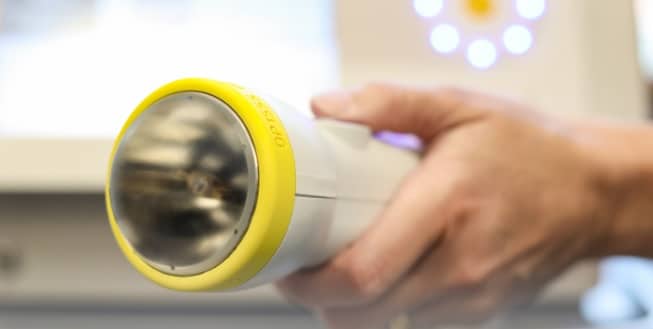
For individuals struggling with chronic pain, joint injuries, or degenerative conditions, surgery can often feel like the only remaining option. However, advances in regenerative medicine now offer alternative, non-invasive treatments that can effectively promote healing and reduce pain—without going under the knife. One such innovation is SoftWave therapy. This cutting-edge treatment uses acoustic wave technology to stimulate the body’s natural healing processes, offering a safer and less invasive alternative to surgery.
SoftWave therapy is gaining popularity among patients and healthcare providers alike for its ability to accelerate recovery, reduce inflammation, and restore function in damaged tissues. Whether you're dealing with a sports injury, arthritis, tendonitis, or post-operative complications, understanding how SoftWave therapy works and what it can do for you is essential before making a decision about surgical intervention.
In this blog, we'll explore the key ways SoftWave therapy helps prevent the need for surgery and what that means for your long-term health and mobility.
SoftWave therapy utilizes patented unfocused shockwave technology, also known as acoustic wave therapy, to stimulate the body’s natural regenerative processes. This treatment involves the delivery of high-energy sound waves into injured or inflamed tissues. Unlike focused shockwaves used in other treatments, SoftWave’s broader wavefield allows for a more extensive area of tissue activation, which helps accelerate healing and reduce pain.
The acoustic waves generated during a SoftWave session increase blood flow, reduce inflammation, and trigger cellular responses that promote tissue regeneration. Specifically, the therapy activates signaling pathways that stimulate the production of stem cells and growth factors. These biological responses help repair and regenerate soft tissue, bone, and cartilage that may be damaged due to injury or degenerative conditions.
One of the unique benefits of SoftWave therapy is its non-invasive nature. There’s no need for incisions, injections, or medications, which significantly reduces the risk of complications and side effects. This makes it particularly appealing to individuals looking to avoid surgery and its associated risks.
SoftWave therapy is supported by real-world outcomes, including improvements in mobility, reduced reliance on pain medications, and enhanced quality of life. For patients facing long-term discomfort or potential surgical intervention, understanding how SoftWave therapy works can offer new hope for healing without the risks and downtime of traditional surgical procedures. The scientific foundation behind this therapy not only explains its effectiveness but also supports its growing use in mainstream clinical practice.
Related: The Role of SoftWave Therapy in Reducing Age-Related Pain
SoftWave therapy is used to treat a wide range of musculoskeletal and soft tissue conditions. Its versatility makes it an excellent choice for patients dealing with chronic pain, injuries, or degenerative disorders. By targeting inflammation, stimulating cell regeneration, and improving circulation, SoftWave therapy helps address the root causes of pain without invasive procedures.
Some of the most common conditions successfully treated with SoftWave therapy include:
The therapy is often recommended for individuals who have tried other conservative treatments—like physical therapy, rest, or medication—without experiencing sufficient relief. It can be particularly beneficial for those with stubborn injuries that have become chronic or for patients who want to avoid or delay surgical intervention.
SoftWave therapy’s ability to promote healing at a cellular level makes it suitable for both acute injuries and long-standing degenerative conditions. For patients exploring options beyond surgery, understanding the variety of conditions that can be treated with SoftWave therapy is a crucial first step. By targeting the underlying issues causing pain and dysfunction, this therapy offers a viable path to recovery without the need for invasive procedures.
Related: 6 Conditions You Didn’t Know SoftWave Therapy Could Treat

When considering options for treating chronic pain or injury, patients are often faced with a choice between surgery and non-invasive therapies. SoftWave therapy offers a compelling alternative to surgical procedures, with a range of benefits that make it an attractive option for many.
First and foremost, SoftWave therapy is non-invasive. This means no incisions, no anesthesia, and no risk of surgical complications such as infections or blood clots. Patients can avoid hospital stays and the long recovery periods typically associated with surgery.
Another major advantage is the speed of recovery. While surgery can require weeks or months of downtime and rehabilitation, SoftWave therapy typically allows patients to resume their daily activities almost immediately. There’s no need to take extended time off work or put life on hold during recovery.
Here are some key benefits of choosing SoftWave therapy over surgery:
SoftWave therapy also appeals to those looking for a more natural approach to healing. Rather than removing or replacing damaged tissue, it supports the body’s ability to heal itself—reducing inflammation, stimulating stem cell activity, and improving circulation. For many, these advantages make SoftWave therapy a more appealing first-line treatment before considering surgical options.
Related: How SoftWave Therapy Treats Plantar Fasciitis Without Surgery
Understanding what happens during a SoftWave therapy session can help ease concerns and set appropriate expectations for first-time patients. Each session is designed to be comfortable, efficient, and highly targeted, providing a positive experience while addressing specific areas of pain or dysfunction.
When you arrive for your appointment, the provider will typically begin with a consultation to evaluate your condition and determine the best treatment area. A conductive gel is then applied to the skin to facilitate the transmission of acoustic waves. The SoftWave device is placed directly on the affected area, and gentle pulses of sound energy are delivered into the tissue.
Most patients describe the sensation as a mild tapping or pulsing. While some discomfort might occur over particularly sensitive or inflamed areas, the treatment is generally well-tolerated. The level of intensity can be adjusted in real time to suit your comfort level and therapeutic needs.
Each session typically lasts between 10 and 20 minutes, depending on the treatment area. There’s no downtime afterward, and patients can resume normal activities immediately. In some cases, temporary redness or soreness may occur, but these effects are minor and short-lived.
Patients often notice improvement within the first few sessions, though a full treatment plan usually involves multiple appointments scheduled over several weeks. By stimulating blood flow, breaking down scar tissue, and activating cellular repair mechanisms, each SoftWave session brings you closer to lasting relief—without the disruption of surgery.
Related: Can SoftWave Therapy Improve Blood Flow and Circulation?
When choosing a treatment, it’s natural to want clear expectations about recovery timelines and results. SoftWave therapy offers a quicker, more manageable path to healing compared to traditional surgical options, especially for individuals dealing with chronic pain or injury.
Patients typically begin to experience relief within the first 1 to 3 sessions. This early improvement often includes reduced pain, increased range of motion, and better function in the affected area. The body’s response to SoftWave therapy is cumulative, so the benefits grow stronger with each subsequent session.
A full treatment plan may include 4 to 8 sessions spaced over several weeks. During this time, the acoustic waves continue to stimulate blood flow, reduce inflammation, and activate stem cells that aid in tissue regeneration. Because the therapy supports natural healing processes, improvements may continue even after the treatment cycle has ended.
The speed and degree of recovery depend on several factors, including the severity and duration of the condition, the patient’s overall health, and how consistently they follow post-treatment care guidelines. For many, SoftWave therapy significantly reduces or even eliminates the need for surgery by addressing the root cause of pain and dysfunction.
Unlike surgery, which may require months of rehabilitation and a lengthy leave from daily activities, SoftWave therapy lets patients stay active throughout the healing process. It’s a realistic and effective option for those seeking lasting results without the downtime or risks associated with invasive procedures.
SoftWave therapy is a versatile treatment suitable for a wide range of patients, but certain individuals are especially well-suited to benefit from its non-invasive approach. Identifying these profiles can help determine if this therapy is right for you or someone you know.
These patient profiles highlight how SoftWave therapy meets the needs of a diverse group, offering hope and healing without surgical intervention.
Ready to explore how SoftWave therapy can help you avoid surgery and get back to living pain-free? Contact Mountain Valley Family Chiropractic in Fort Collins, Colorado, to schedule your consultation with Dr. Ronil Pala, D.C. Discover a non-invasive path to healing that fits your lifestyle and supports your long-term health goals.
